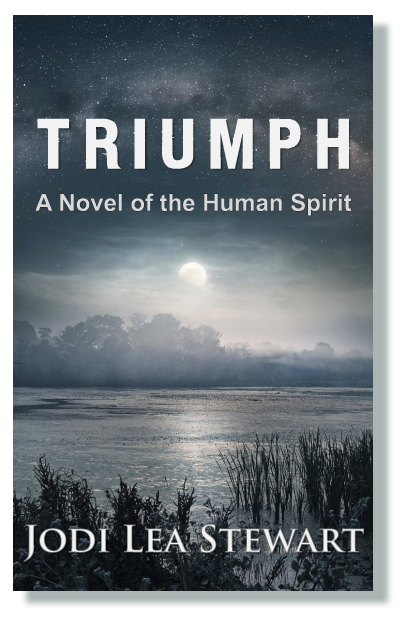Commas have never intentionally hurt you, have they?
Okay, maybe you made a bad grade or two on a school paper because you used the two-inch rule; that is, you placed a comma every two inches on your term paper just to show your instructor you were seriously trying.
When your paper came back with severe grammar-scoldings written in the margins and a link for you to immediately hook up with Grammarly or fail the course, you may have sworn off comma-love forevermore.
Of course, if someone tried to eat your relative when you penned, Let’s eat Grandma instead of Let’s eat, Grandma . . . that surely could have caused a ruckus.
When you think about it, was it really the fault of the commas?
I believe if the commas you have used incorrectly over the years could talk, they’d probably thank you for all the interesting misadventures. Just a thought.
 Don’t hold a grudge. Those little guys are waiting to make you look like a professional punctuator if you will but open the door to them. What do you say? Ready to be a Comma Star?
Don’t hold a grudge. Those little guys are waiting to make you look like a professional punctuator if you will but open the door to them. What do you say? Ready to be a Comma Star?
Exhale. Blow out the tension. Wiggle your fingers. Slap your cheeks, and let’s begin.
1. Introductory phrases/clauses
When you introduce your sentence with something that isn’t a stand-alone sentence, it needs a comma after it. It could be a phrase or a dependent clause, but who cares? It doesn’t stand alone, and that means it needs a comma for support. Don’t get nervous. It’s easy.
For example: When I go to sleep at night isn’t a sentence, is it?
Those are words used to set up (introduce) the reader to what you are going to tell them happens when you go to sleep at night.
When I go to sleep at night, I dream of galloping through the galaxies.
See that?
The introductory phrase (When I go to sleep at night) introduced the rest of the sentence (I dream of galloping through the galaxies).
To separate the two parts, you merely add a comma.
Here’s another example: Since I am king of the world, I can skateboard with a monkey on my shoulder.
Separate the introductory clause (Since I am king of the world) from the explanation (I can skateboard with a monkey on my shoulder) with a comma.
That’s it. Don’t get mired down with subordinate conjunctions, predicate verbs, and all that crap proper grammar terminology. It’s important, but not necessary to remembering where to place your commas. *And please don’t, in a fit of frustration, tell someone where they can place their commas if you know what I mean*
2. Commas between two independent sentences separated by a conjunction
This rule is as simple as stirring sugar in your coffee. In your writing, you don’t want all your sentences so short they sound like a robot learning to speak, do you?
I am Robot Maid. I can clean your house. I can clean for you. I am Robot Maid. I do not clean windows. I do not clean refrigerators. I am Robot Maid.
When we combine a couple of the sentences and separate them with a comma and a conjunction (and, but, so, for, nor, and so on), our writing sounds more sophisticated.
I am Robot Maid, and I can clean your house. I am Robot Maid, but I do not clean windows or refrigerators.
How about this: I won a golden goose yesterday, and now I need to hire a trustworthy money adviser.
Two complete sentences separated by a conjunction need a comma. Easy-peasy.
3. Commas in a series
A series is a comma’s best friend. Or is the comma a series’ best friend? Anyway, in this instance, the commas act as little separators in a series, or a list, of items.
No commas:
We took salad chips cookies sliced tomato sandwiches and soda pop to the lake. I have to ask, are they taking salad chips to the lake or salad and chips to the lake? Are the cookies sliced? Why are they eating sliced tomato sandwiches?
Now use crafty commas to clarify what the sentence really says:
We took salad, chips, cookies, sliced tomato sandwiches, and soda pop to the park. (Yes, the sandwiches are sliced tomato sandwiches).
The last comma in a series is up to you, or your teacher, or your boss. It’s called the Oxford comma. In Associated Press (AP) style, the last comma before the conjunction is omitted. In many other venues, including the novel publishing world, the comma before the conjunction in a series is left in.
Example:
Gerard Butler is tall, handsome, articulate and talented. (AP style)
Gerard Butler is tall, handsome, articulate, and talented. (Oxford comma used)
Question: How are commas used in the next sentence?
To tell you the truth, commas won’t give you rippling muscles, money, or a live-in maid, but they will clarify your writing and earn you praise.
Answer:
1) This sentence has an introductory phrase (To tell you the truth) followed by a comma.
2) It has a series with each object separated by a comma, including an Oxford comma (commas won’t give you rippling muscles, money, or a live-in maid).
3) It also has two complete sentences separated by a comma and the conjunction but.
One last thing . . . which singing icon of the sixties made commas famous?
How?
Sedaka’s blockbuster song, “Breaking up is Hard to Do” (click the link to hear it), begins and ends with:
Down dooby doo down down,
Comma, comma, down dooby doo down down,
Comma, comma down dooby doo down down.
Strange as these lyrics are, they elevate the lowly comma to heights of greatness!
You now know three basic comma rules. I learned them in high school, and they have served me well. They’ll do the same for you.
 Are there other comma rules? Gosh yes. However, when you learn these three rules, you’ll be heads above the crowd.
Are there other comma rules? Gosh yes. However, when you learn these three rules, you’ll be heads above the crowd.
You know I love to hear from you!

Author Jodi Lea Stewart ~ Laughing Makes it All Worthwhile ~
Jodi Lea Stewart is a fiction author who believes in and writes about the triumph of the human spirit through overcoming adversity. With an Okie mom and a Texas stepdad, her writing reflects her life beginning in Texas and Oklahoma, later moving as a youngster to an Arizona cattle ranch next door to the Navajo Nation, and, as a young adult, resuming in her native Texas. Growing up, she climbed petroglyph-etched boulders, bounced two feet in the air in the backend of pickups wrestling through washed-out terracotta roads, and rode horseback on the winds of her imagination through the arroyos and mountains of the Arizona high country.
Her lifetime friendship with all races, cowpunchers, and the southern gentry allows Jodi to write comfortably about all aspects related to the Southwest and the South. P.S. She enjoys cooking when the mood hits.
Her sixth novel, TRIUMPH, a Novel of the Human Spirit, launched in September 2020. If you want a dramatic, sometimes humorous version of New Orleans life, St. Louis, and Texas in the early to mid-century 1900s, read TRIUMPH, a Novel of the Human Spirit by Jodi Lea Stewart.

TRIUMPH will take you places you didn’t expect to go!
Check out Jodi’s news and her latest everything.
What’s next from Jodi? Another dynamic historical fiction catapulting the reader out of Texas into Mexico, Argentina, and China and into the epicenter of another intriguing human drama. Look for it in 2021/2022.
Jodi Lea Stewart was born in Texas to an “Okie” mom and a Texan dad. Her younger years were spent in Texas and Oklahoma; hence, she knows all  about biscuits and gravy, blackberry picking, chiggers, and snipe hunting. At the age of eight, she moved to a large cattle ranch in the White Mountains of Arizona. Later, she left her studies at the University of Arizona in Tucson to move to San Francisco, where she learned about peace, love, and exactly what she DIDN’T want to do with her life. Since then, Jodi graduated summa cum laude with a BS in Business Management, raised three children, worked as an electro-mechanical drafter, penned humor columns for a college periodical, wrote regional Western articles, and served as managing editor of a Fortune 500 corporate newsletter. She currently resides in Arizona with her husband, her delightful 90+year-old mother, a crazy Standard poodle named Jazz, a rescue cat, and numerous gigantic, bossy houseplants.
about biscuits and gravy, blackberry picking, chiggers, and snipe hunting. At the age of eight, she moved to a large cattle ranch in the White Mountains of Arizona. Later, she left her studies at the University of Arizona in Tucson to move to San Francisco, where she learned about peace, love, and exactly what she DIDN’T want to do with her life. Since then, Jodi graduated summa cum laude with a BS in Business Management, raised three children, worked as an electro-mechanical drafter, penned humor columns for a college periodical, wrote regional Western articles, and served as managing editor of a Fortune 500 corporate newsletter. She currently resides in Arizona with her husband, her delightful 90+year-old mother, a crazy Standard poodle named Jazz, a rescue cat, and numerous gigantic, bossy houseplants.
Just for fun . . .

Borrowing unauthorized media (photos) makes me feel so small.

















Great humor! I am brushing up on some grammar rules and your “commas” post caught my eye.
I’m so glad you enjoyed it, Barbara. It’s my feeling that grammar and math should be funny, and why not? Thanks for stopping by!
Usually I do not read article on blogs, but I would like to say that this write-up very compelled me to take a look at
and do so! Your writing taste has been amazed me.
Thanks, quite nice article.
Hey! I know this is kinda off topic but I’d
figured I’d ask. Would you be interested in trading links or maybe guest authoring a
blog post or vice-versa? My site discusses a lot of the same topics as yours and I feel we
could greatly benefit from each other. If you happen to be interested
feel free to send me an e-mail. I look forward to hearing from you!
Excellent blog by the way!
Wow that was unusual. I just wrote an very long comment but after I clicked submit my comment didn’t show up.
Grrrr… well I’m not writing all that over again. Anyways, just
wanted to say superb blog!